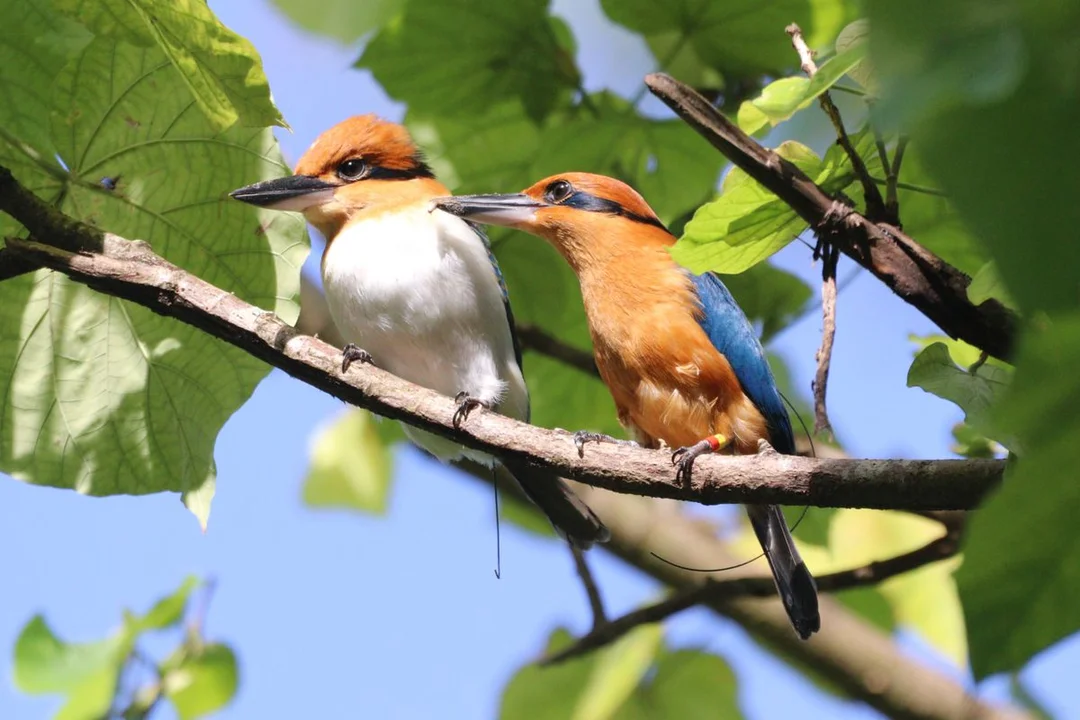
Endangered Bird Species Lays Its First Wild Eggs in Four Decades Thanks to Cincinnati Zoo’s Conservation Efforts
The recent discovery of the first wild eggs from the endangered Sihek, or Guam kingfisher, in nearly 40 years is a remarkable testament to the power of dedicated conservation efforts. Spearheaded by the Cincinnati Zoo & Botanical Garden, this groundbreaking achievement marks a significant milestone for this species that has long been on the brink of extinction.
The Cincinnati Zoo announced that the first wild eggs were laid by the hand-raised Sihek birds, a milestone that took place on their newly designated home at Palmyra Atoll, located about 1,000 miles south of Honolulu, Hawaii. Released as part of the Sihek Recovery Program, the nine young birds, including three from the zoo, contribute a glimmer of hope for the future of their species.
According to Aimee Owen, the Senior Aviculturist at the Cincinnati Zoo, this moment was hard to fathom. “This work on Palmyra is something I couldn’t have imagined witnessing in my lifetime, let alone being a part of,” Owen stated, expressing her enthusiasm as Tutuhan—the first egg from Cincinnati's first chick produced—became a mother herself. This generates not just excitement for researchers but also pride in the conservation community.
For remarkable species like the Sihek, every egg contributes immensely to the ultimate goal of establishing a self-sustaining population in the wild. After suffering immense population decline due to the introduction of the brown tree snake in Guam during the 1940s, the ongoing struggle of these birds has become a focal point for conservationists. Owen mentions, “The short-term goal is to establish a fully self-sustaining Sihek population on Palmyra Atoll. The ultimate goal is to reestablish a Sihek population on Guam.”
As these mated pairs now embark on their journey of incubating and caring for eggs, the challenges ahead cannot be overlooked. Given that they are all less than a year old and are early in their breeding lives, it may take several attempts before they successfully hatch chicks. The significance of this endeavor echoes louder when considering the Sihek’s tragic past triggered by habitat destruction and predation.
Through the painstaking work of aviaries and dedicated conservationists, the rearing of the Sihek species provides a ray of hope, reaffirming the notion that no species is beyond saving. The culmination of these efforts denotes a refreshing narrative in the realm of wildlife preservation—one where small victories culminate into monumental breakthroughs.
As the story of the Sihek unfolds, it provokes questions about what further measures must be taken to continue fostering resilient wildlife populations. As we witness these small yet mighty strides in conservation, let us reflect on our own roles in protecting our planet’s biodiversity. What thoughts do you have regarding the perseverance of endangered species like the Sihek? We’d love to hear from you in the comments below!